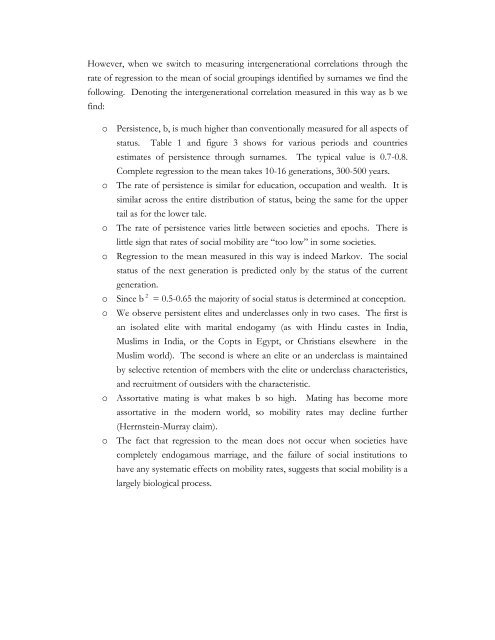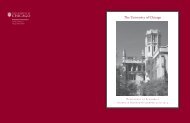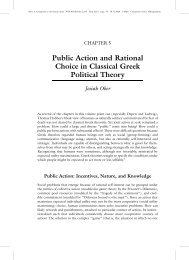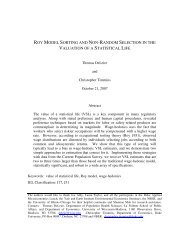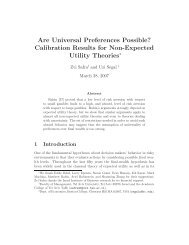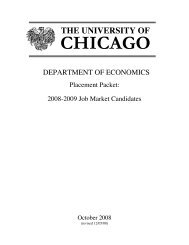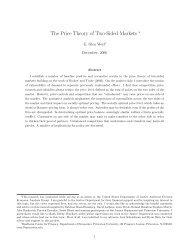Surnames and a Theory of Social Mobility - University of Chicago ...
Surnames and a Theory of Social Mobility - University of Chicago ...
Surnames and a Theory of Social Mobility - University of Chicago ...
You also want an ePaper? Increase the reach of your titles
YUMPU automatically turns print PDFs into web optimized ePapers that Google loves.
However, when we switch to measuring intergenerational correlations through the<br />
rate <strong>of</strong> regression to the mean <strong>of</strong> social groupings identified by surnames we find the<br />
following. Denoting the intergenerational correlation measured in this way as b we<br />
find:<br />
o Persistence, b, is much higher than conventionally measured for all aspects <strong>of</strong><br />
status. Table 1 <strong>and</strong> figure 3 shows for various periods <strong>and</strong> countries<br />
estimates <strong>of</strong> persistence through surnames. The typical value is 0.7-0.8.<br />
Complete regression to the mean takes 10-16 generations, 300-500 years.<br />
o The rate <strong>of</strong> persistence is similar for education, occupation <strong>and</strong> wealth. It is<br />
similar across the entire distribution <strong>of</strong> status, being the same for the upper<br />
tail as for the lower tale.<br />
o The rate <strong>of</strong> persistence varies little between societies <strong>and</strong> epochs. There is<br />
little sign that rates <strong>of</strong> social mobility are “too low” in some societies.<br />
o Regression to the mean measured in this way is indeed Markov. The social<br />
status <strong>of</strong> the next generation is predicted only by the status <strong>of</strong> the current<br />
generation.<br />
o Since b 2 = 0.5-0.65 the majority <strong>of</strong> social status is determined at conception.<br />
o We observe persistent elites <strong>and</strong> underclasses only in two cases. The first is<br />
an isolated elite with marital endogamy (as with Hindu castes in India,<br />
Muslims in India, or the Copts in Egypt, or Christians elsewhere in the<br />
Muslim world). The second is where an elite or an underclass is maintained<br />
by selective retention <strong>of</strong> members with the elite or underclass characteristics,<br />
<strong>and</strong> recruitment <strong>of</strong> outsiders with the characteristic.<br />
o Assortative mating is what makes b so high. Mating has become more<br />
assortative in the modern world, so mobility rates may decline further<br />
(Herrnstein-Murray claim).<br />
o The fact that regression to the mean does not occur when societies have<br />
completely endogamous marriage, <strong>and</strong> the failure <strong>of</strong> social institutions to<br />
have any systematic effects on mobility rates, suggests that social mobility is a<br />
largely biological process.


